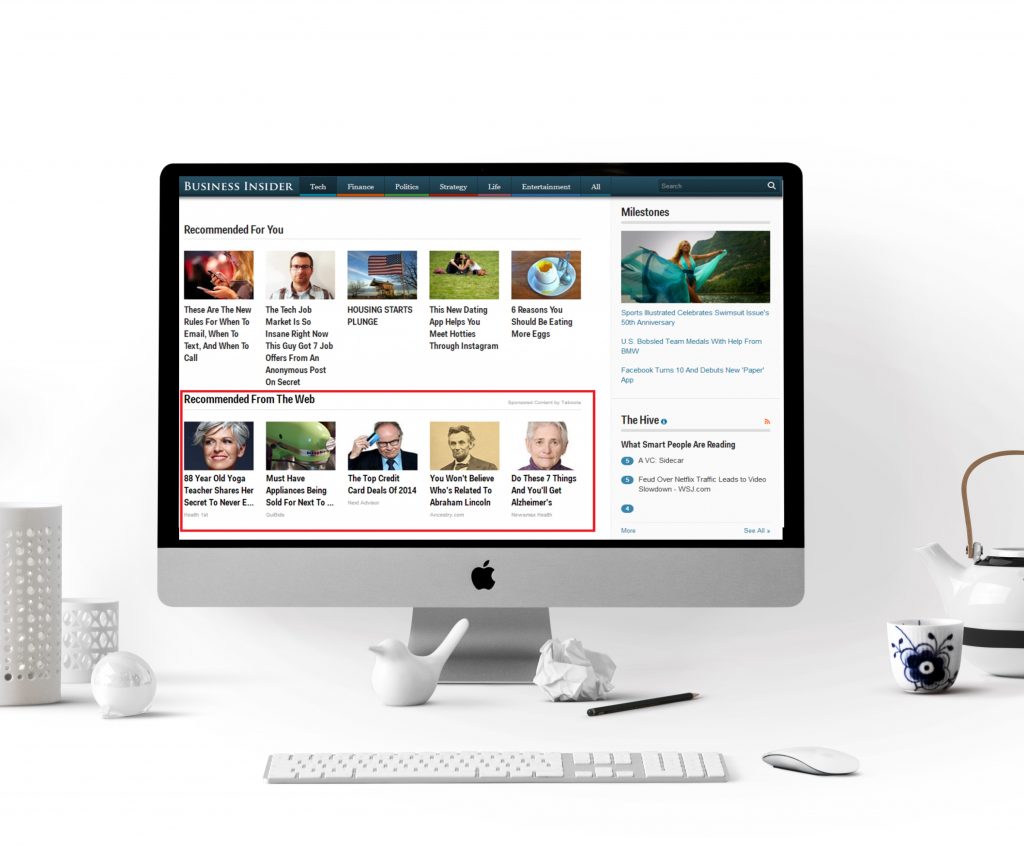Long ago, in decades past, there were only three types of media: print, tv, and radio. If advertisers wanted to have a product look like it was a part of the program or magazine they would do a paid editorial or a product placement within the script/props. With the help of technology, we have evolved. Now these “product placements” are cleverly placed on websites and social media networks, these are called native ads and advertorials. Social Networks such as Facebook and search engines like Google insist that this is a better form of advertising because the ads are more relevant to the searches the viewer has done or closely related to the website on which they appear. And why are they called ‘Native Ads’? The term “native advertising” originated in a talk by investor Fred Wilson at OMMA Global September 2011. Wilson didn’t use the term “native advertising,” but he did mention “native monetization” for web properties, which he described as ads that were “unique and native to the experience” of the site.
Many times marketers refer to these native ads as being in the media regulatory gray-zones, because it is not clear to the viewer it is an ad. Whether you are in support of these types of ads, the primary goal is that there is no noticeable difference between editorial and advertising content. From a regulatory media perspective, this newer type of ad is a powerful expansion of what has been valid for the last few decades. The advocates of native advertising are naturally thrilled with the opportunity to offer consumers content with novel topics which appear to be part of the website’s content but also provides the chance of diverse inter-linking possibilities that take the viewer to an entirely different website. But what are native ads? Below are the most common examples of native ads:
Content Recommendation Widgets:
Often referred to as content discovery widgets—are usually found at the bottom of an article. The viewer typically sees a section of article widgets that states: recommended content. Primarily seen as a publisher solution to drive traffic, some advertisers see value in using widgets to reach a large audience cost-effectively.
In-Ad with Native Element Units:
The In-Ads appear do not appear like any other ad because it fits perfectly into the website and it appears to have relevancy real with the publisher. For example, a tech brand might promote its products on websites that publish user-generated content such as The New York Times or Forbes. Today, Google offers these types of ads for their Adsense clients. As we know, Google prides itself on providing the most relevant content to viewers at any given time. – This need for relevance extends to ads. Google calls these “In-Feed and In Article Ads.” These ads have the same look and feel of the website they are being advertised on and typically have relevant subjects to the actual article the viewer is reading. These ads are seen as the most controversial because they are hardest to discern as advertising. This type of In-Feed content is also often seen on social media as “sponsored content.” On Facebook, it appears in the actual feed and now as interstitials on videos played on the social network, much like YouTube has done for years.
Native Paid Search Ads:
Yes, paid search ads are also considered a type of native advertising. These ads promote listings by appearing at the top of the viewers’ search results. Search engines and individual domains use this form of advertising. Paid search ads also support businesses based on the searcher’s current location and previous preferences for individual businesses or restaurants.
Custom Ads:
The Interactive Advertising Bureau, IAB, uses the catch-all term “custom ads” for contextual ads that don’t fit a particular format. Spotify will keep track of the type of playlists the users makes. For example, a person creates a playlist for workout music, and Pandora might serve up ads for sports products or sports drink.
Most audiences are aware that they are scrolling past sponsored content (native ads) when looking at online magazine articles or social network feeds. It is speculated that these types of ads may be the only advertisements seen on Apple and Google devices when these companies add Ad Blocker software to their devices. If you would like to learn more about the particular advantages of adopting native ads for your company and brand, contact us at Boomtown, and we’ll guide you through the world of native ads.


